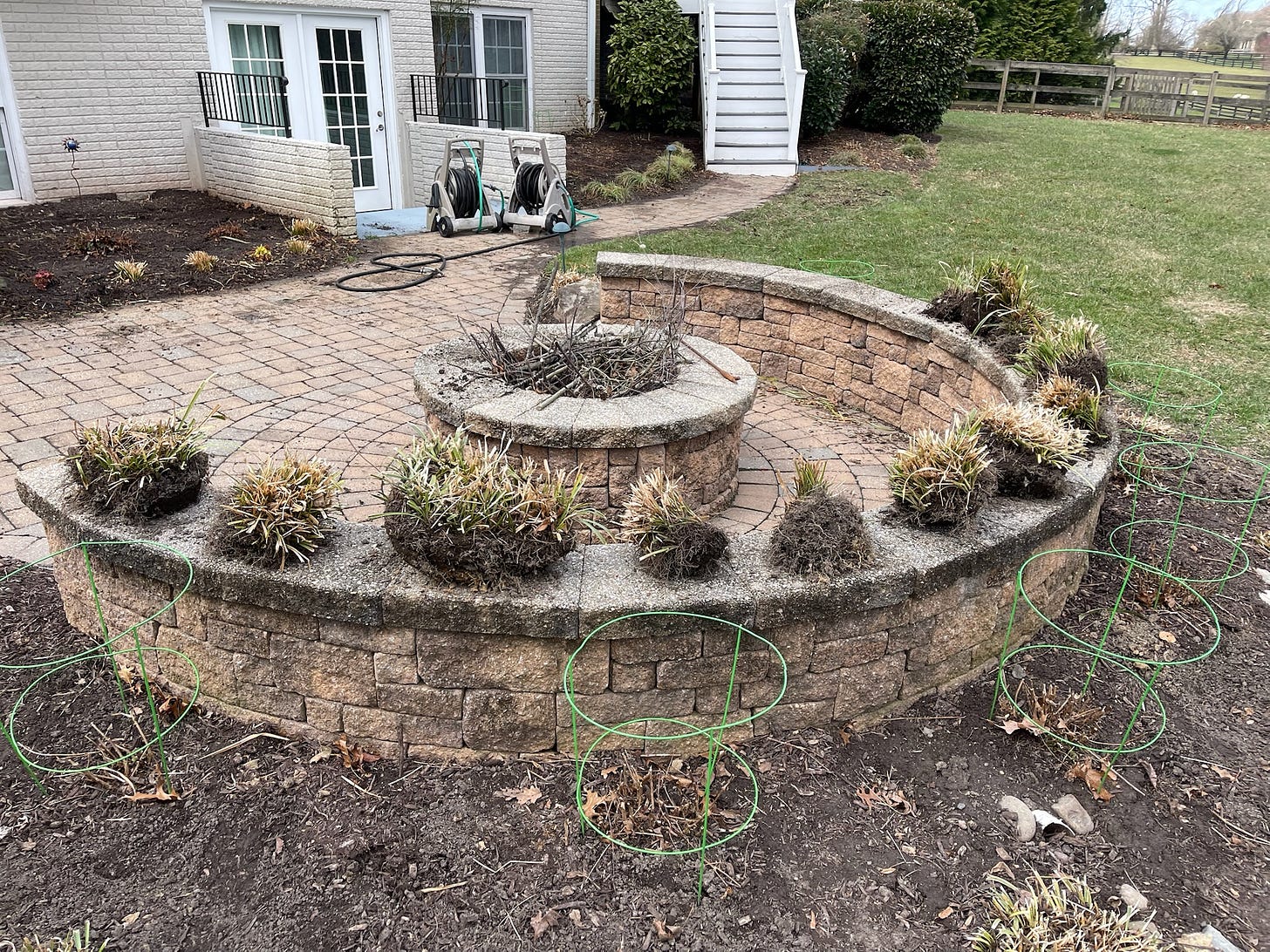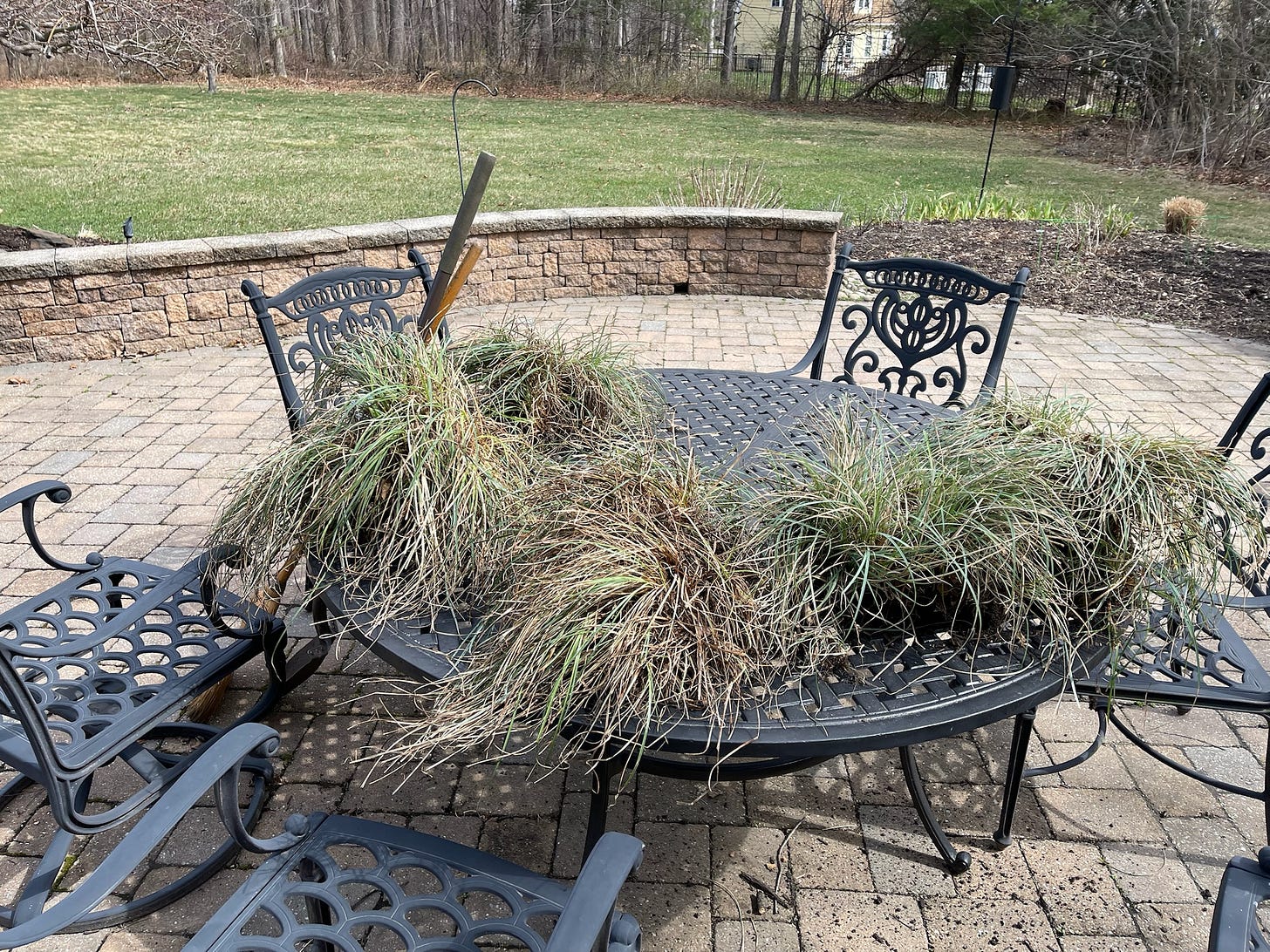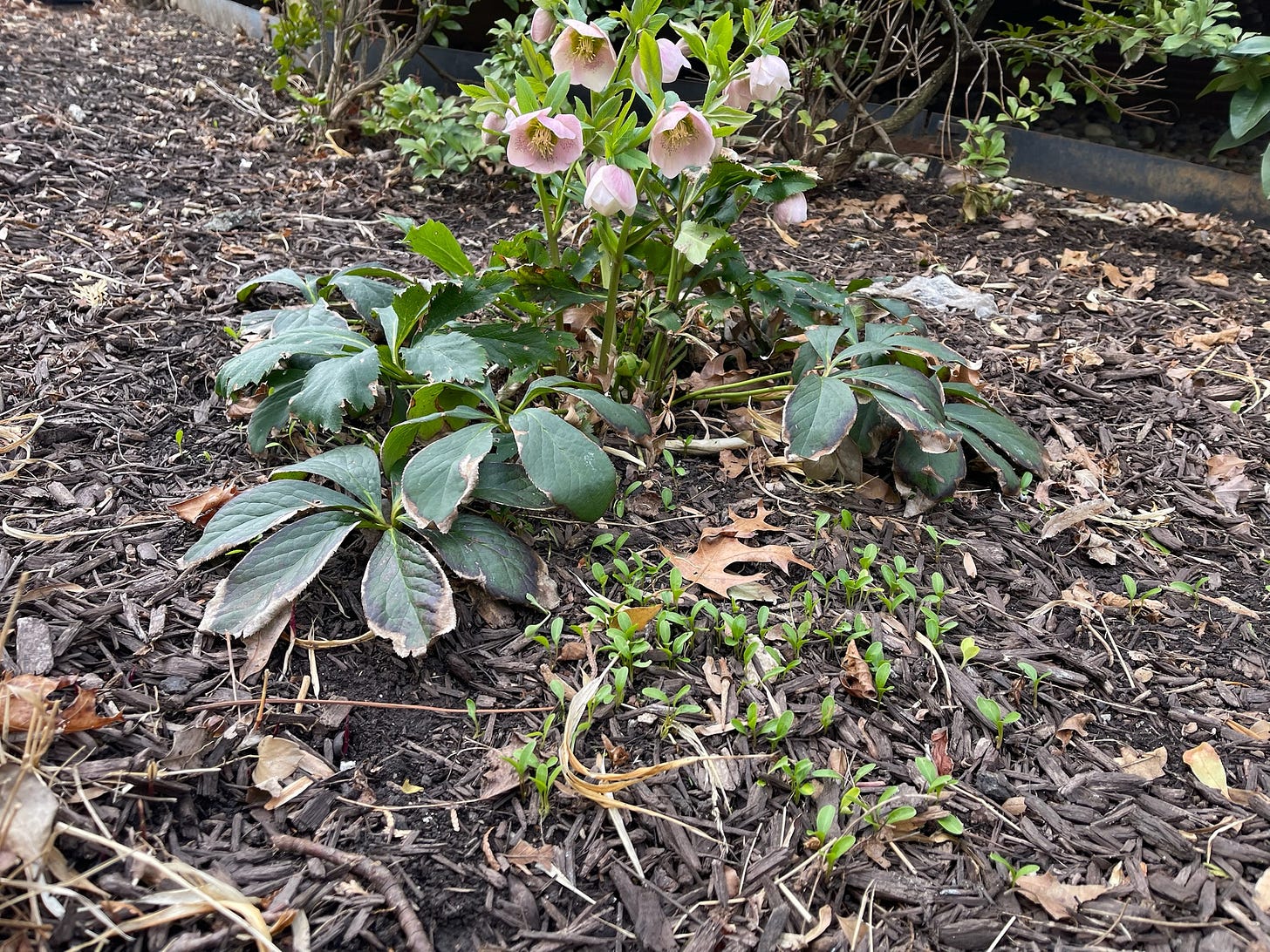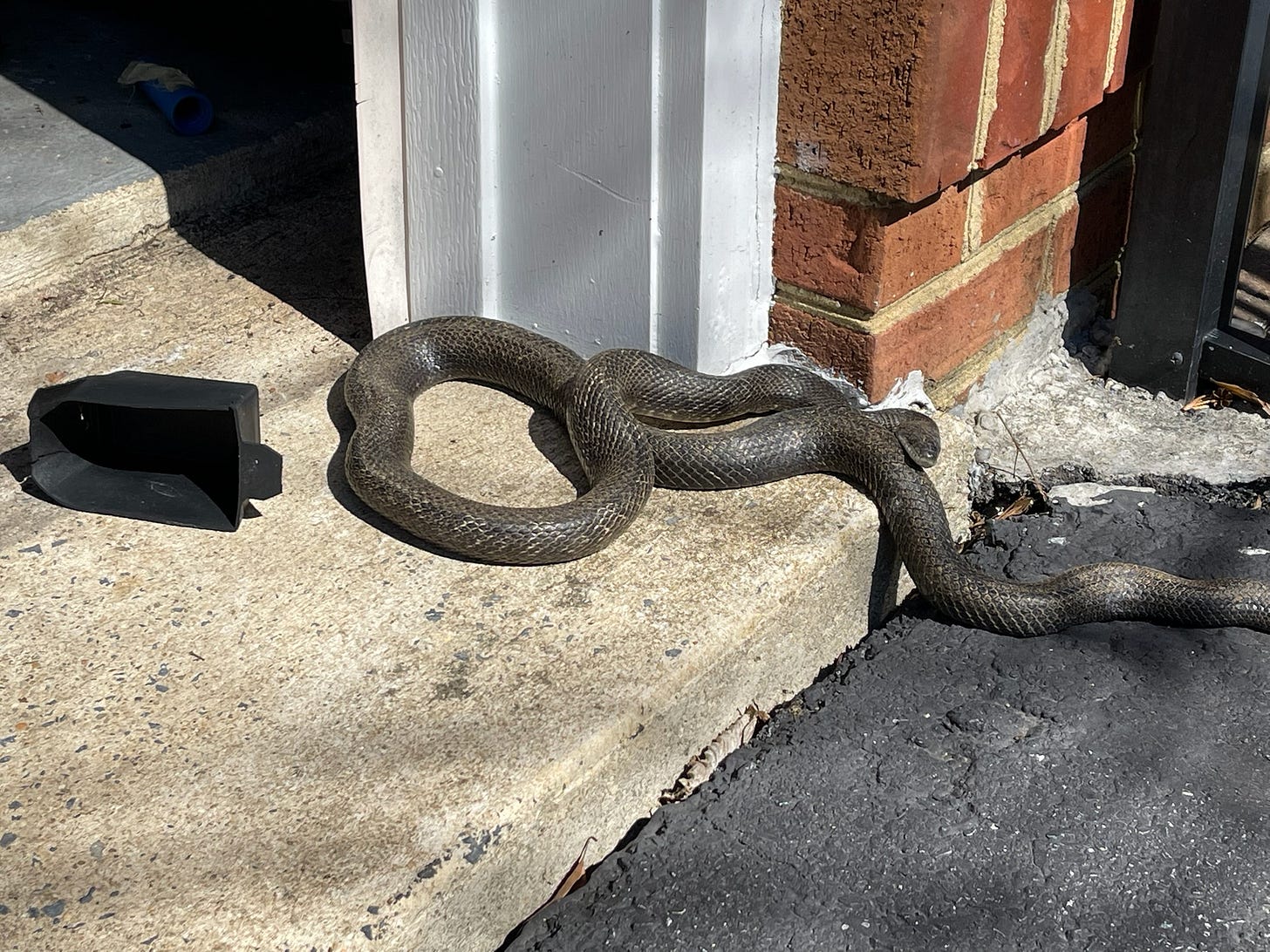Hello to my many loyal readers who have been impatiently waiting for another Painful Education of a Type A Gardener newsletter to appear in their Friday eve inbox. Linda and I have returned from our winter hiatus in Florida and I’m trying to remember how to write this blog. In previous years Linda and I traveled south in February and March, returning in April. This year we changed the plan and traveled January through February, returning in March. I was very curious to see what, if anything, was going on in the garden during March, fearing that I would have nothing to write about. At first glance it was very disappointing. It seemed that all of the plants were still asleep except for my Lenten rose (hellebore), famous for being early spring bloomers. My two hellebores didn’t disappoint, looking absolutely beautiful against the bland, colorless landscape. But I wondered if the rest of the troops were going to make an appearance this year. I’m pleased to report that I may have been overly pessimistic about the prospect of a garden full of no-show perennials.
It appears, upon closer examination, that the gang is still all here, or mostly here. I just had to scratch through the decaying leaves and old mulch to find evidence of life popping out of the root balls of many plants. While I was in Florida, for no good reason I happened to catch a documentary about Martha Stewart. At some point she looked at the camera while out in her garden and said, “The key to gardening is if you don’t like something in your garden, change it.” I’ve been giving her comment a lot of thought, and I’m going to try that philosophy this year.
I’ve been out cleaning up the beds for the past few days. This entails cutting back plants I left to add “vertical interest” to the garden over the winter, collecting an endless number of sticks and twigs that fell from surrounding trees, pulling a few weeds, cutting back ornamental grasses, and generally preparing the beds to be mulched in April.
Author’s Note: The old gardener’s adage holds true: It’s not the kneeling down that’s the problem. It’s the getting back up that is a killer.
The first in a long list of spring projects was to dig up and divide the Blue Zinger sedge grass that borders the astilbe bed, followed by the liriope that border the firepit and what used to be the ostrich fern bed. Digging the plants out wasn’t as hard as I anticipated, but dividing the mature plants wasn’t easy. Thankfully my trusted Hori-Hori knife did a great job of splitting the clay-encrusted root balls. I’m thrilled to report that the only digging and dividing left to do is the Japanese Hakone forest grass by the edge of the steps bed.


Let’s see. What else? In the “trying to be like Martha Stewart” department, I dug out some liriope and moved a few coral bells (heuchera) to the front of the old ostrich fern bed. I always thought they got lost behind the taller liriope plants. I fed my rhododendron in the steps bed with Holly-tone (fertilizer for acid-loving plants) in the forlorn hope that they might flower this year. I don’t see any buds yet, so I think it’s a lost cause. I can’t figure out why my rhodos won’t flower. While I was at it, I fed the azaleas and the hydrangea. On the other side of the bed, I don’t see any signs of the pulmonaria (lungwort) I planted last fall, and they are supposed to be early spring bloomers. I don’t see any signs of the three hostas I planted either, but it’s still early so I’m trying not to hyperventilate.
On a positive note, the ostrich ferns I moved from the bed behind the house to the bed under the arborvitae trees all seem to have made it through the winter. They can spread all they want under the trees with my blessing. It feels great not to have to wrestle with them in a flower bed. I’m also noting a good bit of self-seeding from one of the Lenten rose plants, so maybe I’ll be able to get a bunch of hellebores for next season.

Another Author’s Note: I’ve made certain that I’m well stocked with ibuprofen.
In the “get creative and spend some money” category is figuring out what to plant in the back of the ostrich fern bed, as well as along the back of the bed behind the waterfall. The ostrich fern space poses the same, tired problem of not getting full sun, which is exacerbated by the fact that half the bed gets additional shade from the deck. The obvious answer is to plant flowering shrubs along the back of the bed near the house, perhaps Encore azaleas that bloom spring through fall and do well in partial shade. For some reason I’m resistant to the idea and can’t explain why. The space behind the waterfall gets a lot more sun and should be easy to design and plant, but I haven’t found the right answer for that space either. I’ve tried to grow Rosanne geraniums there for two seasons and they just don’t seem to thrive. Now I have three Hameln fountain grass planted there, which I intend to move. I think I’m going to try garden phlox in one of the beds, but I’m not sure which one. No matter what I end up doing, it will be more fun than digging up and dividing liriope and Blue Zinger sedge on the borders of the beds.
Our old friend, the black snake, has welcomed us home. I’ve seen him (her?) several times hanging around the corner of the house near the garage and even sunbathing on the back deck. Linda is not happy about the snake, and I’m finding myself more than a little cautious as I move about the garden beds, especially the steps bed nearest the garage. Perhaps it’s time to find a contractor to fix the hole that obviously leads to the snake's home under the house. Or maybe not. Mr. Snake is becoming part of the family.
I’m also looking forward to deciding where to put my new garden ornaments. Santa Claus brought me a cool looking garden troll (I almost wrote “cute looking,” but Type A Gardeners don’t do “cute”). And while we were in Florida, we killed a day at an art show where I found some metal butterfly, bee, and sunflower ornaments that will look great in one of the beds.
Anyway, that’s the plan. My favorite day of the gardening year is mulch day, which I’ve scheduled for the second week in April. I’m hoping to get all my digging, dividing, relocating, and planting done by then.
Opening day for the Orioles is Thursday, March 27, at Toronto. Home opener is Monday, March 31.
The first round of the Masters is Thursday, April 10, shortly before mulch day.
As always, feel free to share free subscriptions to The Painful Education of a Type A Gardener with friends and family. Check out the archives for lots of additional gardening content.





welcome back, Ken. We already mulched our beds this past week ... cause of back pains!